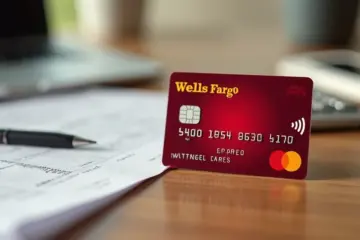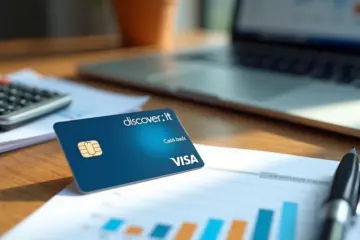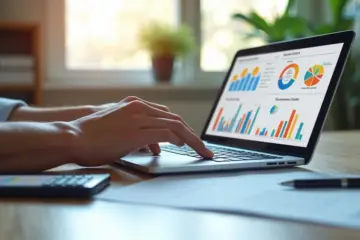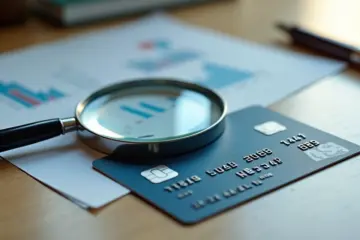Types of credit: Learn about the options available on the market
Introduction: Discovering Credit Options
Feeling lost with all the credit choices out there? Wondering which one really fits your needs? It’s easy to get confused with so many options, each promising to be the best.
Advertisement
This article is here to help you clear the fog. You’ll dive into the world of credit cards, personal loans, and lines of credit. We’ll break down how each works and what’s in it for you. Find out which credit option clicks with your lifestyle and goals. Get ready to make smart financial choices that can boost your future.
Advertisement

What Are Credit Cards and How Do They Work?
Credit cards are like handy tools for your wallet. They let you buy things even if you don’t have cash right now. You can think of them as a short-term loan from the card company. At the end of the month, you get a bill that shows everything you’ve spent. Then, you can pay it all off, or just a part of it, though paying a part means you’ll get charged some interest.
Why People Like Credit Cards:
Anúncios
- Easy and Convenient: You can pay for almost anything, anywhere, without needing cash. Whether it’s shopping online or dining out, credit cards make it simple.
- Earn Rewards: Many cards give rewards like points or cash back every time you buy something. This can turn your spending into future savings or travel discounts.
- Build Your Credit Score: Using a credit card wisely can help improve your credit score. A good score is important if you want to borrow money in the future, like for buying a house.
Things to Watch Out For:
- Debt Danger: It’s easy to spend more than you can pay back. This can lead to debt, especially because credit cards often have high-interest rates.
- Affecting Your Credit Score: Late payments or having a high balance can hurt your credit score. This can make it harder to get loans later on.
- Extra Costs: Some cards have fees like annual charges or high interest on unpaid balances. These can add up if you’re not careful with your payments.
In short, credit cards can be a great help if used right. They offer convenience and rewards but also come with risks. Always keep track of your spending and try to pay off your balance in full. Are you ready to make your credit card work for you? Remember, it’s about staying in control and making the card fit your financial habits!

Understanding Personal Loans
Personal loans are a great way to borrow money when you need it. Unlike credit cards, which let you spend up to a limit and pay it back over time, personal loans give you a lump sum of cash all at once. You then pay this back with regular payments over a set period.
The big advantage of personal loans is usually lower interest rates compared to credit cards, especially if your credit score is good. This means you could save money on interest if you’re borrowing for a big expense.
Common reasons people choose personal loans include:
- Consolidating debt: You can roll multiple high-interest debts into one loan with a lower rate, making it easier to manage and possibly cheaper.
- Funding major purchases: Whether it’s a home renovation, a medical bill, or a wedding, having a set payment structure helps you budget.
- Handling emergencies: When unexpected expenses pop up, like car repairs, personal loans can offer quick access to needed cash.
Before you decide on a personal loan, keep these points in mind:
- Fixed interest rates: Most personal loans have a fixed rate, meaning your payments stay the same each month.
- Flexible terms: You can often choose a repayment plan from two to seven years, which can help fit your budget.
- Fees: Some loans come with origination fees, so be sure to factor these into your decision.
Personal loans can be a smart financial tool if used wisely. They offer a clear repayment plan and can help manage costs effectively. If you’re thinking about getting one, make sure to shop around and compare offers to find the best deal for you. This approach can help you make informed choices and potentially save money in the long run.

Is a Line of Credit Right for You?
A line of credit is like having a financial safety net. It’s a flexible loan that lets you borrow money whenever you need it, up to a set limit. Unlike a regular loan where you get a lump sum all at once, a line of credit allows you to take out only what you need, when you need it. This is perfect for managing unexpected expenses, like emergency home or car repairs.
Here are some key advantages of having a line of credit:
- Flexible Access: You can borrow money as you need it without the hassle of reapplying. This is great if your expenses are unpredictable or vary, such as seasonal costs or occasional medical bills.
- Interest on What You Use: You only pay interest on the amount you actually withdraw, not on the entire credit limit. This makes it more cost-effective than some loans where you pay interest on the full amount borrowed.
- Quick Funds: A line of credit gives you fast access to cash in emergencies, like sudden home repairs. You won’t have to wait for approval since your credit is already established.
When you’re deciding if a line of credit is right for you, think about how it compares to other options:
- Credit Cards: Both offer flexibility, but lines of credit usually have lower interest rates. If you plan to borrow often, this could save you money.
- Personal Loans: These provide a set amount of money with fixed payments, ideal for planned expenses. A line of credit offers ongoing flexibility and more adaptable repayment options.
- HELOCs: If you own a home, a Home Equity Line of Credit can offer larger amounts at lower rates but uses your home as collateral. Unsecured lines of credit don’t require you to risk your property.
Ultimately, whether a line of credit suits you depends on your financial habits and needs. Consider your spending, how often you’d need cash, and your ability to repay. Ask yourself: Do you need frequent access to funds? Can you manage your borrowing responsibly? Understanding these aspects will guide you in making the best choice for your financial situation.
Conclusion: Finding Your Best Credit Option
You’ve just explored different ways to use credit, like credit cards, personal loans, and lines of credit. Understanding these helps you make smarter money choices, so you can pick the right option that matches your financial needs.
Think about what you’ve learned and how it fits with your money goals. Are you ready to take control of your credit? How can these options help you reach your dreams? Now’s the time to dive deeper into these credit choices and see how they can become part of your financial strategy. Your path to better money management starts here!





